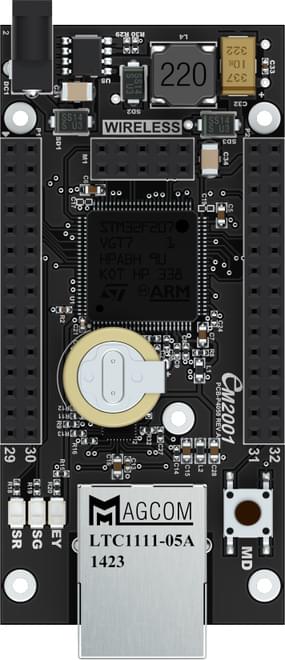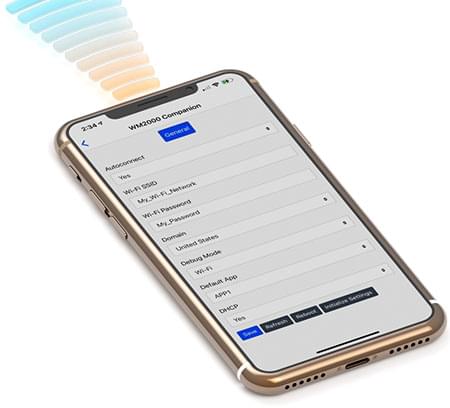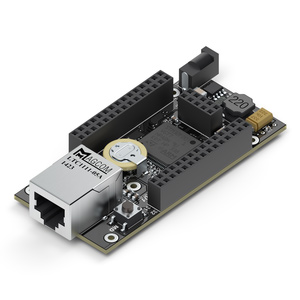The EM2001 is a full-featured Tibbo BASIC/C-programmable IoT Board with Ethernet, as well as optional Wi-Fi*, BLE* (Bluetooth Low Energy), and 4G/LTE cellular** connectivity. The EM2001 has four UARTs. The board offers substantial speed and functionality improvements over its predecessor — the original EM1001 device.
The board is self-sufficient — it does not require a host PCB to plug into. The RJ45 jack is mounted directly on the board. The EM2001 also contains a DC-DC regulator that can power the board and has an additional current budget for external hardware.
The device's capabilities are further enhanced by the onboard flash memory hosting a hardened fault-tolerant file system, as well as the EEPROM and RTC with a backup battery.
The EM2001 has 56 general-purpose I/O lines and can control an external LCD, keypad, buzzer, card readers, serial devices, and other circuitry. All I/O lines are accessible through two dual-row connectors with the standard 2.54mm (100mil) pitch.
The EM2001 is a close relative of the EM2000 IoT module.
* Requires the WA2000 add-on, which can be connected externally or piggybacked on top of the EM2001.
Using the WA2000 also makes possible over-the-air (OTA) firmware updates for the EM2001.
** Requires a standard 4G/LTE modem to be connected to a UART of the EM2001.











